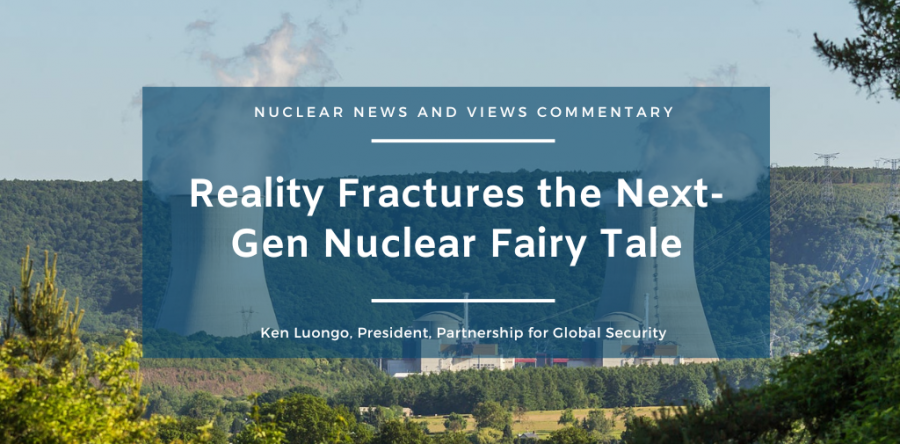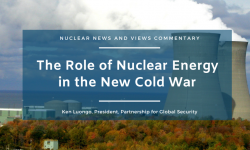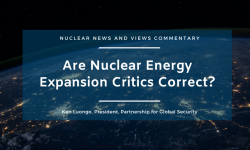The cratering of the NuScale Power-UAMPS Carbon Free Power Project is not the end of the world for next-generation nuclear energy. But it is the end of the fairy tale phase.
So much hot air was being blown into the next-gen nuclear narrative that it was inevitable the balloon would burst when it rubbed up against real world conditions.
Nuclear power is not some kind of energy technology superhero that can save the day through the deployment of social media memes.
It is costly to license and deploy. New designs are technologically challenging. Reactors need to be proven safe and secure. Inflation and interest rates take their toll on project costs.
But nuclear energy, new and existing, is an essential response to the global clean energy transition and it needs to be scaled up.
That was underscored by U.S. Special Presidential Envoy for Climate, John Kerry, who unequivocally stated last week that “Nuclear is 100% part of the solution” and that “It’s clean energy.”
A dramatic testament to this reality is an anticipated declaration at the upcoming global climate conference, COP 28, by the U.S., U.K. France, Finland, Sweden, and South Korea to triple nuclear capacity by 2050.
The pledge may also call on the World Bank and other international finance institutions to lend money for nuclear projects. This would be a seismic shift in international energy finance policy if it occurs.
The high profile backing of nuclear power as a significant climate solution by major economic powers also will sweep significant change into the culture of the COP, which has been closely associated with renewable energy as the primary response to carbon reduction.
This shift in emphasis may radiate out to developing economy nations that are seriously considering the value of nuclear energy for their countries. Many are grappling with climate ravages, population increases, intensified urbanization, and a deep dependence on fossil fuels.
But most of these nations are unprepared for nuclear operation. They do not have an adequate technical educational structure, trained workforce, or the institutional experience to support a nuclear power program. They need significant support in all these areas.
Russia and China may not be invited to sign the COP nuclear pledge, but they will be waiting in the wings to market their advanced nuclear technologies to these nations.
They have the advantage of being able to offer technical and operational support and easy credit. They already have established deep energy and infrastructure cooperation roots in key regions, and they will exploit these advantages to the disadvantage of the U.S. and its allies.
So far, the U.S. and its partners have been running a multi-billion dollar next-gen nuclear technology development effort, hoping for deployable new reactors. But they don’t seem to have an effective and integrated nuclear export and market domination strategy, or if they do it’s hard to find.
These western countries have not devoted a fraction of the required resources to assess and develop the international market for the next-gen reactors they are readying for deployment.
They haven’t figured out how and when to cooperate rather than compete with one another for market share. And they have not developed the international guidance that will be required to effectively govern next-gen nuclear use.
Governments need to look over the horizon and create a complete runway for success of the technologies they are developing. International market cultivation, global security guidelines, licensing reform, and more effective approaches to export financing are the needed next phase of the nuclear expansion process.
If the U.S. and its nuclear pledge allies want a substantial share of the international next-gen nuclear power market, they will have to do more than talk up the value proposition. Because hard realities just fractured the first-of-a-kind fairy tale.
Ken Luongo, President, Partnership for Global Security





